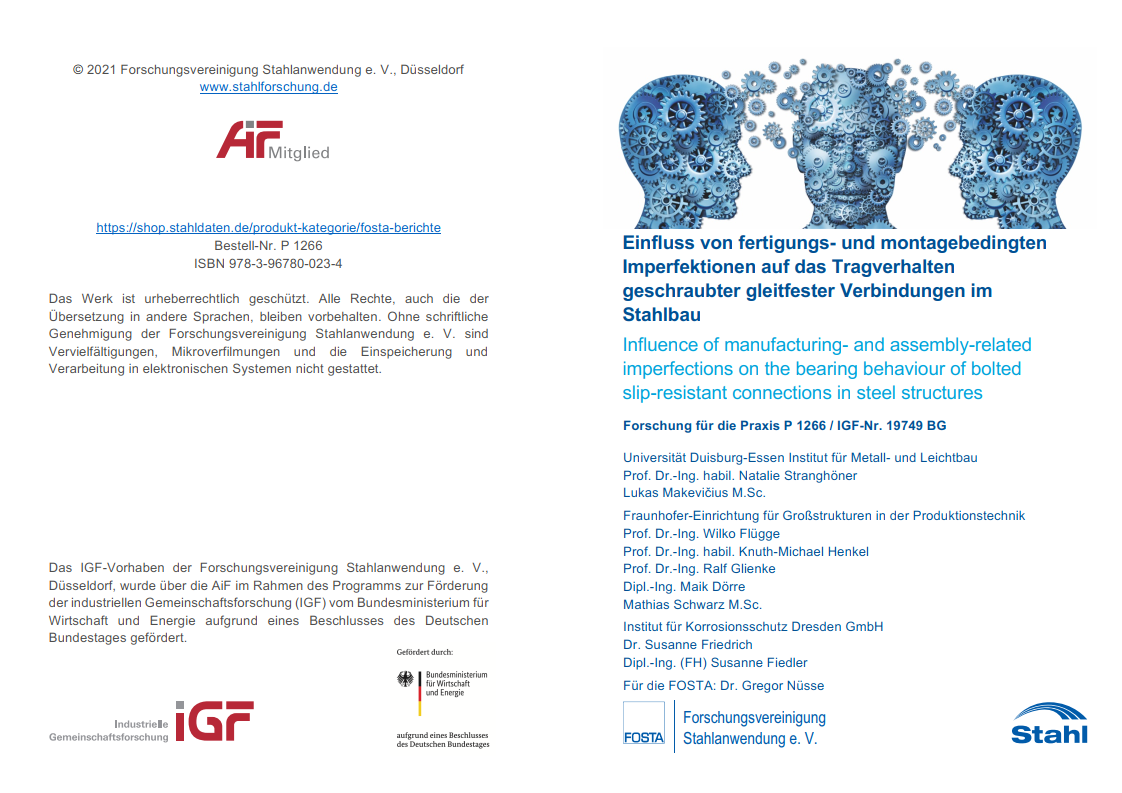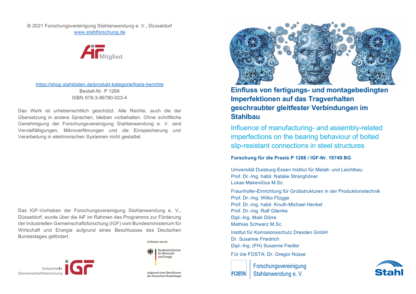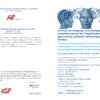Description
P1266 – Influence of manufacturing- and assembly-related imperfections on the bearing behaviour of bolted slip-resistant connections in steel structures
Slip-resistant connections are traditionally used in steel and plant construction whenever slip and deformation in the bolted connections must be minimized. The current test procedure according to DIN EN 1090 2, Annex G is limited to the basic load-bearing behavior under laboratory conditions. On the part of the industry, recurring questions arise as to the extent to which production-, assembly- and operation-related influences must be considered in the design of non-slip connections, as these affect the economic efficiency of this type of connection.
In this research project, systematic investigations were carried out on slip-resistant connections of categories B/C according to EN 1993-1-8, whereby the various imperfections that can be observed on construction sites were simulated under laboratory conditions. For this purpose, reference tests without introduced imperfections were first carried out to determine a baseline value. Subsequently, artificial imperfections were introduced into the bolted connection in the form of structural (edge misalignment, lining plates), weather-related (moisture, icing, temperature fluctuations), logistical (transport damage, ageing of coatings) and production-related influences (layer thickness fluctuations) as well as the tightening (various tightening methods). In addition, accompanying numerical parameter studies were carried out on the influence of the offset of the edge, the tightening sequence and the packing plate.
The test results enabled an evaluation of the imperfections with regard to the loadbearing behavior of slip-resistant connections as well as the currently existing regulations. Considering the influence of different coating thickness ranges, it could be shown that low coating thicknesses (25 µm to 40 µm) lead to up to 30 % lower slip factors compared to the normative reference coating thickness (40 µm to 80 µm). As expected, a reduction in the slip factor of up to approx. 20 % was observed for the investigated edge offsets of 1 mm and 2 mm compared to standard test specimens. Surface-damaging imperfections like dirt or ageing of the coating, but also damp and wet surfaces lead to up to 16 % lower slip factors. Furthermore, it could be shown that tightening by means of combined method leads to a significant increase compared to tightening according to Annex G of DIN EN 1090 2 up to 30 %. However, this favorable influence of tightening with combined method is currently not normatively considered.
With the present test results, the influence of production and assembly-related imperfections as well as operation-related influences on the load-bearing behavior of slipresistant connections in steel construction was recorded. The objective of the research project has thus been achieved.
Published in:
March 2022
Authors:
Prof. Dr.-Ing. habil. N. Stranghöner, L. Makevičius M.Sc, Prof. Dr.-Ing. W. Flügge, Prof. Dr.-Ing. habil. K.-M. Henkel, Prof. Dr.-Ing. R. Glienke, Dipl.-Ing. M Dörre, M. Schwarz M.Sc




